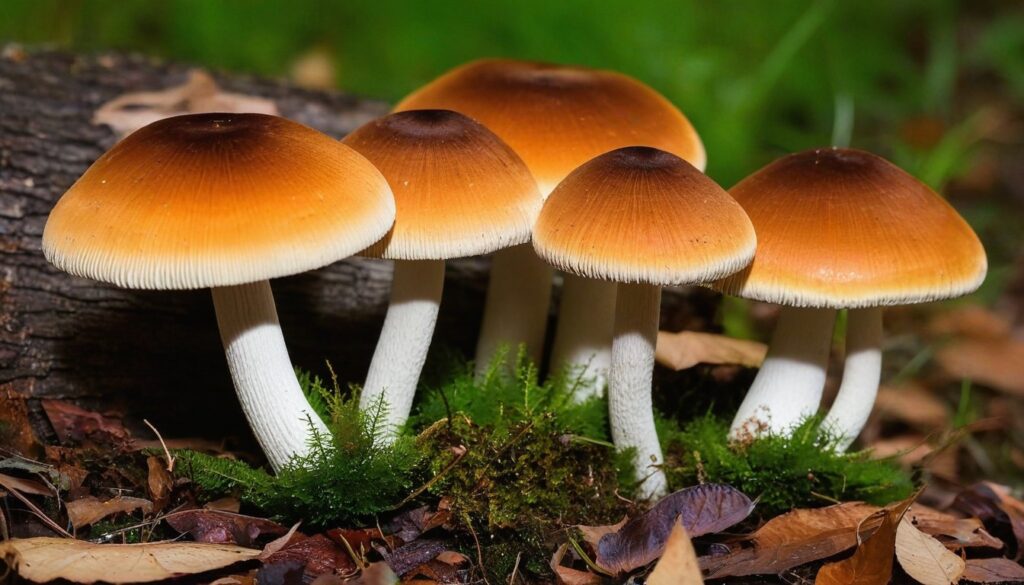Welcome to our comprehensive guide to the common mushrooms found in California. This guide will take you on a journey through the intriguing world of local fungi species, providing valuable insights into their characteristics and habitats. Whether you’re a seasoned forager or a curious newbie, this guide has something for everyone. Let’s delve into the fascinating world of California mushrooms!
Key Takeaways:
- Learn about the diversity of mushrooms found in California.
- Discover popular edible and poisonous species.
- Explore the medicinal properties of mushrooms.
- Understand the etiquette and regulations of foraging.
- Get tips for identifying mushrooms and cultivating them at home.
The Fascinating Diversity of California Mushrooms
California mushrooms are as diverse as the state itself. With its varied geographic features, it’s no surprise that different ecosystems support a wide range of fungi species. From the coast to the mountains, there are numerous species of mushrooms to discover and explore.
Coastal Mushrooms
The coastal region of California is known for its cool and foggy climate, providing the ideal environment for certain mushroom species. A popular variety found in this region is the Amanita phalloides, also known as the death cap. Unfortunately, this species is highly toxic and responsible for most mushroom poisoning deaths worldwide.
Mountain Mushrooms
The mountains, on the other hand, offer a different array of mushroom species. In the Sierra Nevada range, the Boletus edulis, commonly referred to as the porcini mushroom, can be found. This delicious edible mushroom is a popular ingredient in many culinary dishes.
|
Mushroom Name |
Ecosystem |
Edibility |
|---|---|---|
|
Agaricus arvensis |
Grasslands and meadows |
Edible |
|
Calvatia gigantea |
Grasslands and disturbed areas |
Edible when young |
|
Boletus edulis |
Mountainous regions |
Edible |
|
Amanita phalloides |
Coastal regions |
Poisonous |
If you plan on foraging for mushrooms, it’s important to have a good understanding of the different species and their respective ecosystems. Always do your research and consult with an expert to ensure you are harvesting the right mushrooms safely and legally.
Edible Mushrooms in California
California is home to many delicious edible mushrooms. These popular species not only provide a unique taste but also offer a range of nutritional benefits. Let’s explore some of the most commonly foraged edible mushrooms in California.
|
Mushroom |
Description |
Culinary Uses | |
|---|---|---|---|
|
Chanterelle |
Beautiful orange or yellow caps with ridges and a fruity aroma |
Best sautéed with butter and garlic, or in creamy pasta sauces |
Look for them in late summer and fall in coniferous forests, near oak and madrone trees, and usually after rainfall |
|
Porcini |
Large and meaty with brown caps and thick stems |
Perfect for risottos, soups, and grilled dishes |
Found under coniferous trees, especially pines, in late summer and fall |
|
Matsutake |
Aromatic and flavorful with a reddish-brown cap and white gills |
Highly prized in Japanese cuisine, great for soups and broths |
Typically found under pine trees and must be foraged early in the season before bugs eat them |
|
Morel |
Cone-shaped with a honeycomb texture and distinctive nutty flavor |
Perfect for sautéing with butter, or as a topping for pizzas and pastas |
Found in sandy soils near trees, shrubs, and burned areas from March to May |
When foraging for edible mushrooms, it’s important to follow some basic safety rules. Make sure you positively identify the mushroom before picking it, stay away from polluted areas and sensitive environments, and avoid picking mushrooms close to roadsides or areas that are exposed to pesticides or other chemicals.
Cooking mushrooms thoroughly will destroy any potential toxins and remove any unwanted bacteria. Avoid eating raw mushrooms, especially when foraging wild mushrooms, as some species can cause serious health problems if consumed raw.
By following these tips, you can safely enjoy the delightful flavors and nutritional benefits of edible mushrooms in California.
Poisonous Mushrooms to Avoid
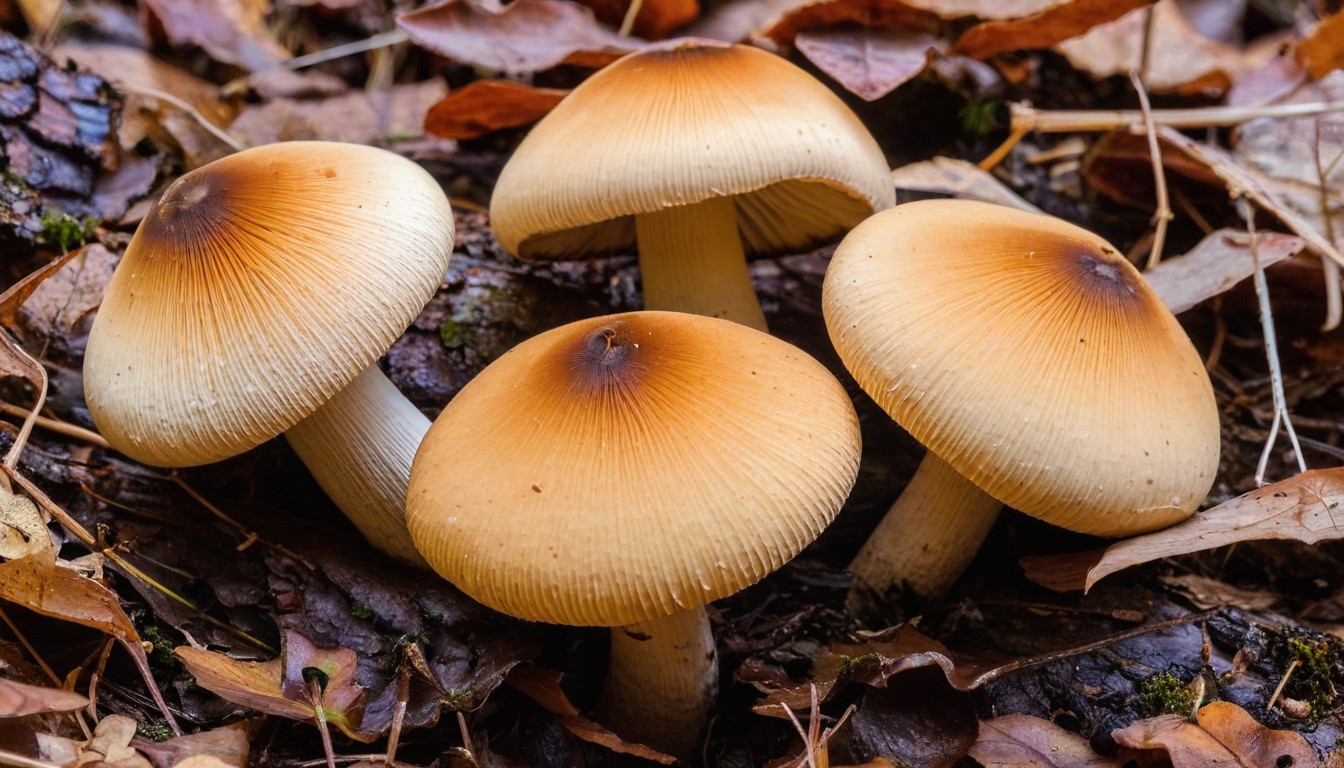
While hunting for mushrooms in California can be an adventure, it’s essential to be aware of the dangerous ones. Some mushrooms can cause serious harm, so it’s crucial to learn how to identify the toxic species and avoid them. Here are some common poisonous mushrooms in California:
|
Mushroom |
Distinctive Features |
Effects |
|---|---|---|
|
Amanita phalloides (Death Cap) |
Large, cap usually greenish-yellow, white gills and spores, and a conspicuous cup-like volva at the base |
Severe liver and kidney damage, sometimes fatal |
|
Galerina marginata (Autumn Skullcap) |
Small brown mushrooms with an inrolled margin and adnexed attachment to the stipe |
Liver and kidney failure, sometimes fatal |
|
Gymnopilus junonius (Big Laughing Gym) |
Orange cap with a red-brown centered cap when young, and a thick, fibrous stipe |
Nausea, vomiting, and hallucinations |
The above are just a few examples. Remember that there are many toxic mushrooms out there, and it is best to err on the side of caution and avoid any that you are not sure about.
Some safe practices to adopt when mushroom hunting include:
- Learn how to identify the mushrooms you plan to collect, and only choose ones that are safe to eat
- Avoid consuming mushrooms unless you are 100% sure of their identity, even if you think you have properly identified them
- Wash your hands thoroughly after handling wild mushrooms
By learning to distinguish between poisonous and edible mushrooms, you can ensure a safe and enjoyable mushroom hunting experience in California.
Medicinal Mushrooms in California
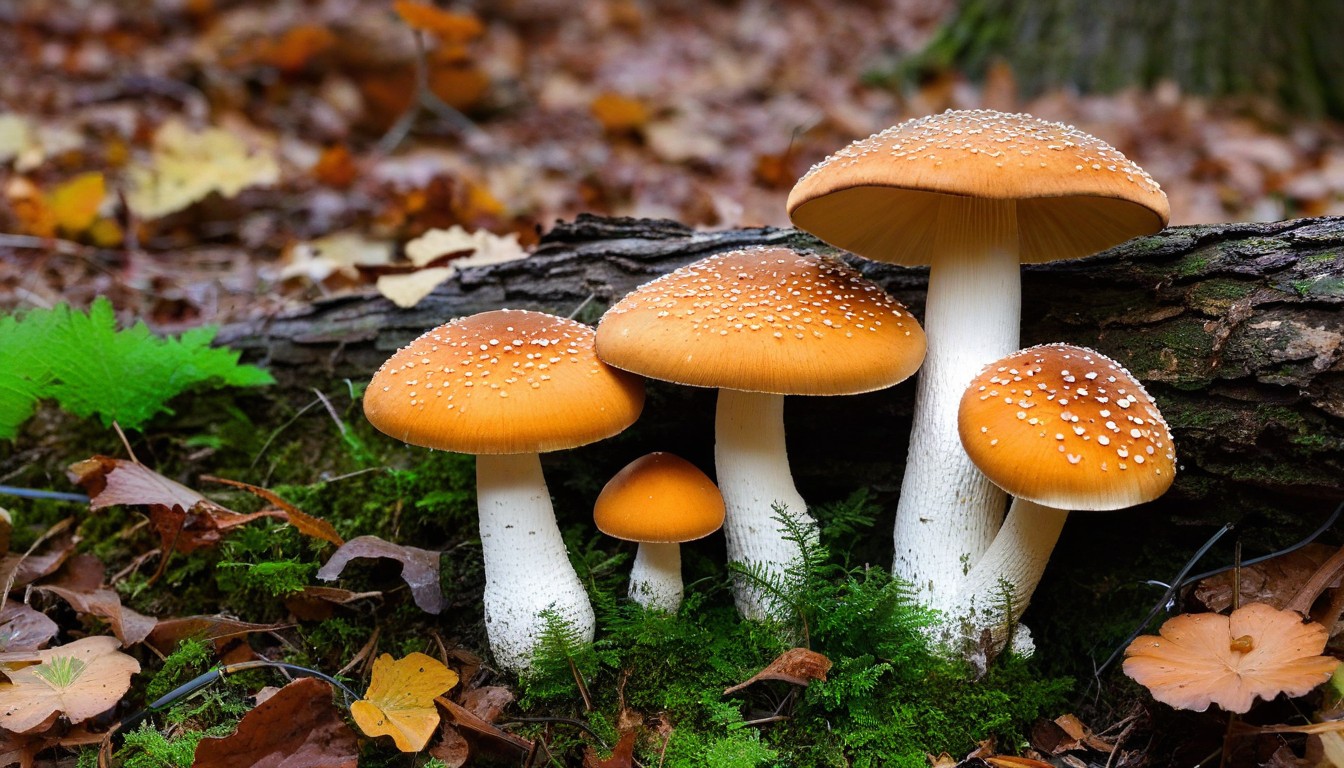
Mushrooms are a treasure trove of medicinal properties. Many species have been traditionally used in herbal remedies for centuries. In California, you can find several types of medicinal mushrooms with potential health benefits. Let’s explore some of the most common ones:
|
Mushroom |
Health Benefits |
|---|---|
|
Reishi |
May boost the immune system, reduce stress, and improve sleep. |
|
Lion’s Mane |
May enhance memory, cognitive function, and nerve regeneration. |
|
Chaga |
May have anti-inflammatory properties and protect against oxidative stress. |
|
Maitake |
May improve glucose control and have immune-enhancing properties. |
It’s important to note that while medicinal mushrooms have potential health benefits, they are not a substitute for conventional medicine. You should always consult a healthcare professional before using mushroom supplements.
If you’re interested in cultivating these mushrooms or using them for culinary purposes, many specialty mushroom growers and markets in California offer a range of options. Mushrooms are versatile and an excellent addition to your diet, providing both health benefits and flavor!
Cultivating Mushrooms at Home
Do you love mushrooms and want to grow your own at home? With the right techniques and equipment, cultivating mushrooms at home can be a rewarding and tasty hobby. In California, home cultivation is becoming increasingly popular, as more people seek to enjoy mushrooms at their freshest and at lower prices.
Equipment Needed
The equipment needed for cultivating mushrooms at home is relatively simple and can be easily obtained from specialty suppliers or online stores. At the minimum, you will need the following items:
- Mushroom spawn or culture
- Substrate (compost, sawdust, straw, etc.)
- Containers (plastic bags, jars, trays, etc.)
- A misting bottle or sprayer for water
- A heat source (heating pads or incubators)
Substrate Options
The choice of substrate (the material the mushrooms will grow on) will depend on the type of mushroom you wish to cultivate. Some popular options include:
- Compost: a nutrient-rich mixture of organic matter, manure, and soil, used for growing many different types of mushrooms, such as white button, oyster, and shiitake.
- Wood chips or sawdust: commonly used for growing shiitake, reishi, and lion’s mane mushrooms.
- Straw: perfect for growing oyster and shiitake mushrooms, especially when supplemented with other organic materials like soybean meal or cottonseed hulls.
Environmental Conditions
Mushrooms require specific environmental conditions to grow successfully. Usually, you will need a space that is dark, humid, and has a consistent temperature. Different types of mushrooms also prefer different growing conditions:
|
Mushroom Type |
Ideal Temperature |
Ideal Humidity |
Lighting Requirements |
|---|---|---|---|
|
White Button |
55-65°F |
60-70% |
No direct light needed |
|
Oyster |
60-75°F |
85-95% |
Some indirect light recommended |
|
Shiitake |
55-75°F |
80-90% |
No direct light needed |
Cultivation Technique
The technique for cultivating mushrooms at home will depend on the type of mushrooms and the substrate you use. However, the general steps are as follows:
- Prepare the substrate according to instructions.
- Inject the mushroom spawn or culture into the substrate using a sterile syringe or inoculation tool.
- Seal the containers with a breathable material like microporous tape or filter patches.
- Place the containers in an incubation or fruiting location, depending on the growth stage of the mushrooms.
- Mist the containers with water regularly to maintain humidity.
- Harvest the mushrooms when they reach maturity.
Cultivating mushrooms at home requires patience and attention to detail, but the results can be rewarding. With the right equipment, substrate, environmental conditions, and cultivation technique, you can grow your own delicious and healthy mushrooms right in your backyard.
Rare and Endangered Mushrooms in California
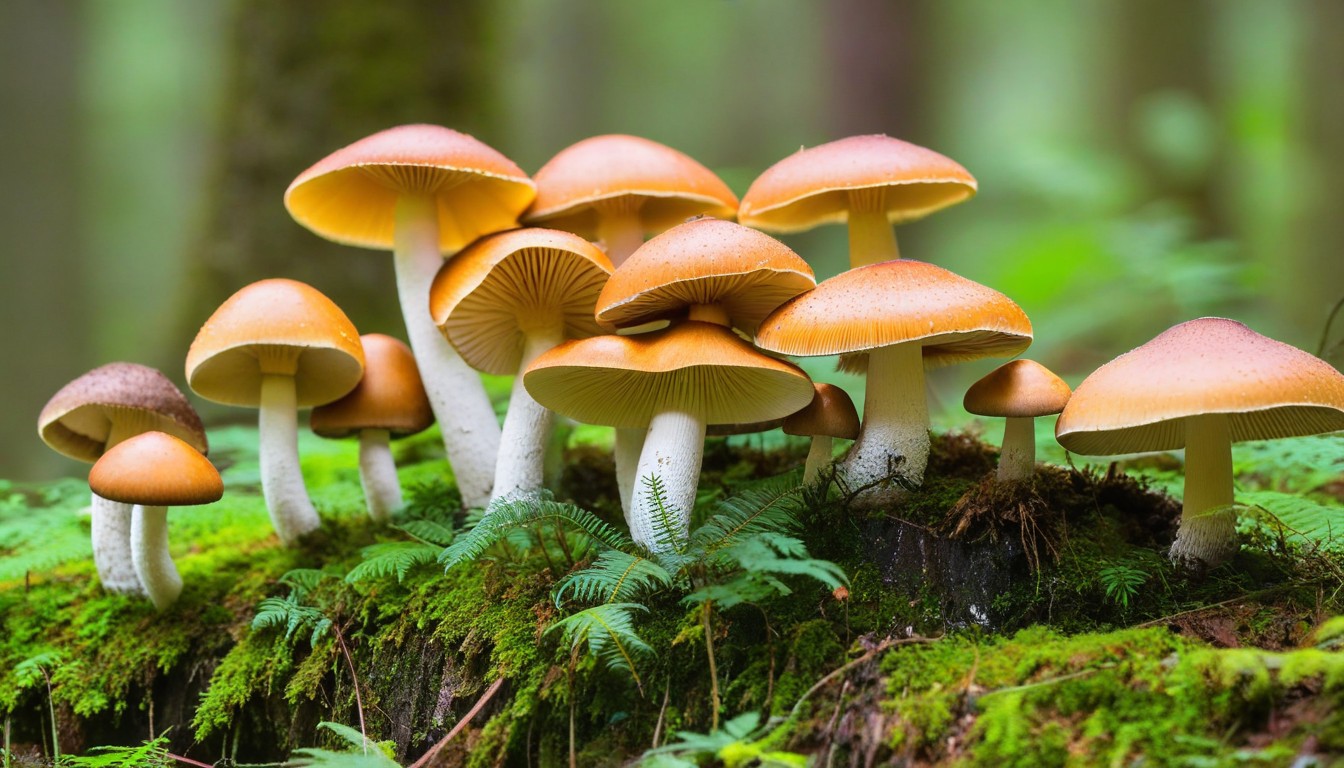
California’s unique and varied ecosystems are home to a wide variety of mushroom species, some of which are rare and endangered. These incredible fungi play an essential role in the state’s ecological balance, providing a wealth of benefits to the environment and wildlife.
Unique Species
California is home to several rare mushroom species, including the California matsutake mushroom, which is highly esteemed for its flavor and aroma. Other unique species include the yellow-footed chanterelle, California black truffle, and several different types of coral mushrooms.
Factors Contributing to Decline
The decline of rare and endangered mushrooms in California can be attributed to several factors. Habitat loss due to urban development, logging, and wildfires has caused significant damage to many ecosystems throughout the state. Pollution, climate change, and over-harvesting for commercial purposes also contribute to their decline.
Conservation Efforts
Despite the challenges they face, there are several conservation efforts underway to protect rare and endangered mushrooms in California. These initiatives involve habitat restoration, educational programs, and regulations regarding harvesting and selling of mushrooms. Citizen science projects, like the Bay Area Mycological Society’s Rare Fungi Survey, are also playing a critical role in identifying and preserving these unique species.
“Conservation is a state of harmony between men and land.” – Aldo Leopold
Mushroom Foraging Etiquette and Regulations
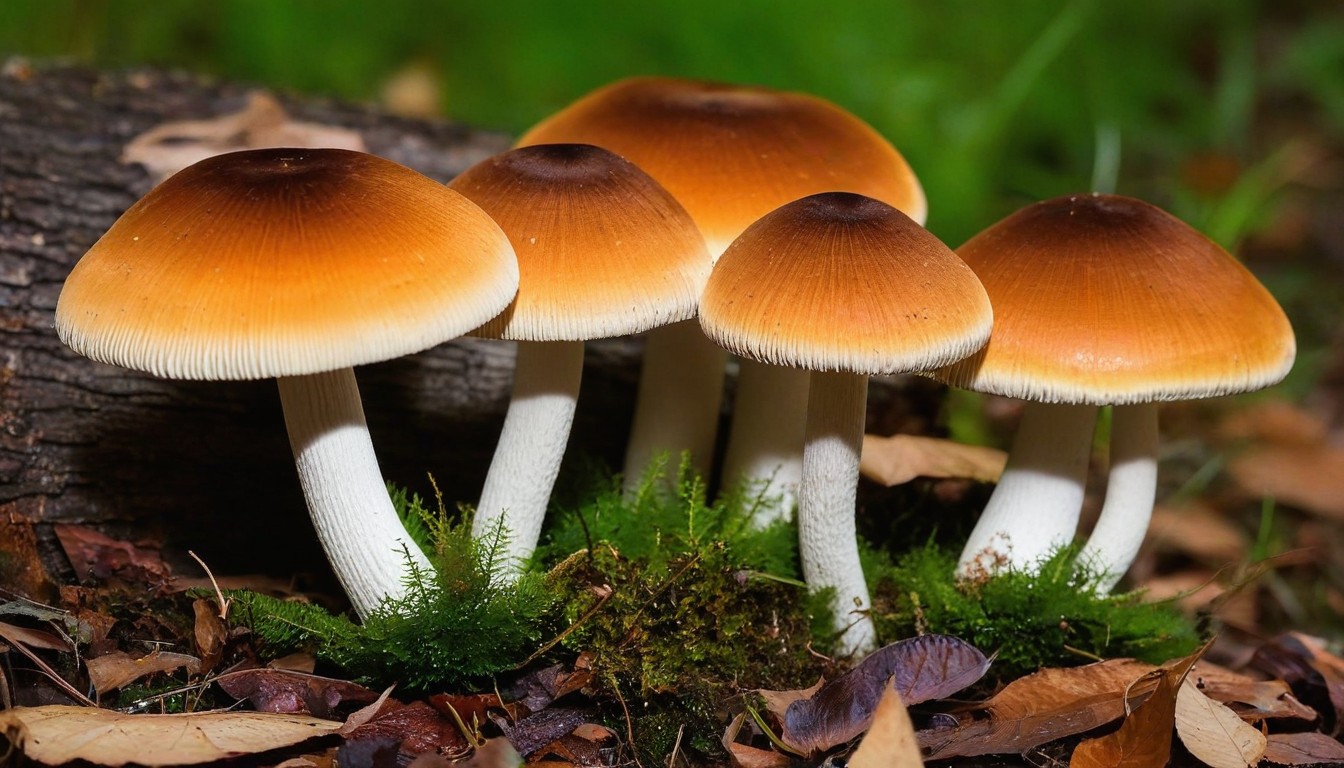
Foraging for mushrooms can be a fun and rewarding experience, but it’s important to follow proper etiquette to ensure that you’re not harming the delicate ecosystems where these valuable organisms grow. It’s also crucial to understand the regulations set by local authorities to avoid potential legal issues.
Foraging Etiquette
Respect the environment and other foragers by adhering to the following etiquette:
- Don’t pick more mushrooms than you need;
- Avoid stepping on or disturbing the surrounding vegetation;
- Use a knife to cut mushrooms at the base, rather than pulling them by the stem;
- Don’t damage or remove rare or endangered species;
- When encountering private property, always ask for permission before foraging.
Regulations
In California, mushroom hunting is permitted on most public lands, including national forests, state parks, and Bureau of Land Management areas. However, it’s important to follow the rules and regulations set by local authorities. For example:
|
Location |
Regulations |
|---|---|
|
National and State Parks |
Foraging is generally prohibited, and officials may impose fines for violations. |
|
Bureau of Land Management Areas |
Most areas allow mushroom foraging, but some require permits or restrict the harvest of certain species. |
|
Private Property |
Always obtain permission from the landowner before foraging any mushrooms on private property. |
By following proper etiquette and regulations, you can enjoy the experience of foraging for mushrooms in California while also protecting the environment and complying with the law.
Popular Mushroom Hunting Locations in California
If you’re a mushroom enthusiast, California is the perfect destination to explore a variety of mushroom species. From lush forests to scenic countryside, the diverse landscapes of California offer numerous locations to embark on a mushroom hunting adventure.
National Parks
|
Park Name |
Location |
|---|---|
|
Yosemite National Park |
Sierra Nevada mountains |
|
Redwood National and State Parks |
North coast region |
|
Death Valley National Park |
Eastern California |
California’s national parks contain a wealth of mushroom species, including some rare and endangered ones. Remember to follow foraging regulations and respect the natural environment while exploring these beautiful locations.
State Forests
|
Forest Name |
Location |
|---|---|
|
Los Padres National Forest |
Central Coast region |
|
Mendocino National Forest |
North Coast region |
|
Tahoe National Forest |
Sierra Nevada mountains |
California’s state forests are also a great place to hunt for mushrooms. Whether you’re searching for edible or medicinal species, you’re sure to find a variety of fungal treasures in these pristine wilderness areas.
Remember to always receive permission from the landowners before foraging mushrooms, respect the surrounding environment, and follow foraging regulations.
Tips for Identifying California Mushrooms
Identifying mushrooms can be a daunting task for beginners, but with practice and the right resources, it becomes easier and more rewarding. Below are some tips to help you improve your mushroom identification skills:
1. Study Mushroom Field Guides
A comprehensive guide to California mushrooms can help you learn about the various species and their identifying features. There are many excellent field guides available, including “Mushrooms of the Redwood Coast,” “Mushrooms of the Pacific Northwest,” and “California Mushrooms: The Comprehensive Identification Guide.”
2. Pay Attention to Mushroom Habitat and Season
The habitat and season in which you find a mushroom can provide valuable clues to its identity. Different mushroom species grow in different locations and during specific times of the year. For example, chanterelles grow in the fall in coniferous forests, while morels emerge in the spring in burned areas.
3. Take Note of Key Identification Characteristics
While identifying mushrooms can be challenging, paying attention to key characteristics can help. Factors such as cap shape, gill attachment, spore print color, and mushroom size can all be used to narrow down potential identifications.
4. Use Online Resources and Apps
There are many online resources and apps available to assist with mushroom identification. These include Mushroom Observer, iNaturalist, and the North American Mycological Association’s Mushroom Expert website. These resources allow you to upload photos, identify characteristics, and get assistance from other mushroom enthusiasts.
By following these tips, you can improve your ability to identify the mushrooms of California and enjoy the thrill of foraging for local fungi.
The Role of Mushrooms in California’s Ecosystem
Celebrated for their unique gastronomic properties, mushrooms also serve as a vital component in California’s complex ecosystem. These remarkable organisms play a pivotal role in maintaining the balance of the state’s diverse natural systems.
Mushrooms and Decomposition
As decomposers, mushrooms are essential in breaking down dead organic matter. They aid in the recycling of nutrients back into the soil, which enriches it with essential minerals and elements. Embedded within the ground, mushrooms also help to prevent the accumulation of organic waste. In turn, this contributes to the sustainability of the environment and promotes a healthier ecosystem.
Mushrooms and Nutrient Cycling
Another vital role that mushrooms play in California’s ecosystem is nutrient cycling. Through their symbiotic relationships with plants, fungi facilitate the exchange of nutrients, producing a mutually beneficial relationship. As fungi absorb minerals and nutrients from the soil and pass them onto the plant, the plant, in turn, supplies the fungi with crucial energy-rich compounds via photosynthesis.
Mushrooms and Trees
Mushrooms establish symbiotic relationships with trees as well. The most common example of this relationship is the mycorrhizal fungi, which helps trees absorb vital nutrients such as phosphorus and nitrogen, while the trees’ roots, in turn, provide the fungi with carbohydrates and other necessary compounds. These interactions are critical in promoting a healthy forest ecosystem. Without these mutualistic relationships, the forest wouldn’t thrive as it should, leading to a decline in biodiversity.
“Mushrooms are like little environmental miracles. Their unique properties provide exceptional benefits, from healthy and nutritious meals to promoting a sustainable and balanced environment.”
Conclusion
In conclusion, exploring the world of common mushrooms in California is an adventure that can be both exhilarating and educational. From the diversity of fungi species to their vital role in the state’s ecosystem, there is always something new to learn and discover.
By following the foraging etiquette and regulations, identifying mushrooms carefully, and cultivating them responsibly, we can contribute to preserving these remarkable organisms and ensure their sustainability for future generations to enjoy.
Whether you’re an avid mushroom enthusiast or a curious beginner, we hope this guide has provided valuable insights into the incredible world of local fungi in California.
FAQ
What is this guide about?
This guide is about common mushrooms found in California. It provides information on local fungi species, their identification, characteristics, and habitats.
What should I expect to learn from this guide?
By reading this guide, you will learn about the fascinating diversity of mushrooms in California, including edible and medicinal varieties. You will also gain insights into mushroom cultivation, foraging etiquette, hunting locations, and the role mushrooms play in the state’s ecosystem.
Are there poisonous mushrooms in California?
Yes, California is home to some poisonous mushrooms. It is important to be aware of these toxic species, their distinctive features, and the potential risks associated with consuming them.
Can I cultivate mushrooms at home?
Yes, you can cultivate mushrooms at home. This guide will provide you with techniques for successful mushroom cultivation, including information on equipment, substrates, and environmental conditions required.
Are there any rare or endangered mushrooms in California?
Yes, California has unique species of rare and endangered mushrooms. This guide will introduce you to some of these species and explain the efforts being made to conserve them.
What are some popular mushroom hunting locations in California?
California offers numerous locations for mushroom hunting. You will find information on popular spots, such as national parks and state forests, where you can embark on your mushroom hunting adventure.
How can I improve my mushroom identification skills?
This guide provides tips, techniques, and resources to help you improve your mushroom identification skills. It will assist you in confidently identifying mushrooms found in California.
What is the role of mushrooms in California’s ecosystem?
Mushrooms play a crucial role in California’s diverse ecosystems. They contribute to decomposition, nutrient cycling, and symbiotic relationships with trees. This guide explores their unique ecological functions.

